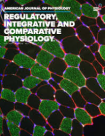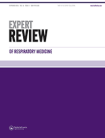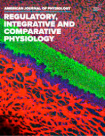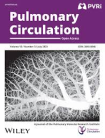Publications
A complete list of Dr. Brown’s publications can be found at this link:
https://www.ncbi.nlm.nih.gov/myncbi/mary%20beth.brown.1/bibliography/public/

In the article by Brown MB, Kempf A, Collins C, Long G, Gupta S, Hellman Y, Wong V, Farber M, Lahm T titled ‘A Prescribed Walking Regimen plus Arginine Supplementation Improves Function and Quality of Life for Patients with Pulmonary Arterial Hypertension: A Pilot Study’ published in the journal Pulmonary Circulation 2017; 8(1) 1–12. DOI: 10.1177/2045893217743966, Dr. Brown and colleagues determined for the first time that a mostly home-based exercise program was feasible and effective for patients with pulmonary arterial hypertension.

In the article by Brown MB, Neves E, Long G, Novack R, Graber J, Gladish B, Owens M, Wiseman A, Fisher A, Presson R, Petrache I, Kline J, Lahm T titled ‘High Intensity Interval Training (HIIT) but not Continuous Training Reverses Right Ventricular Remodeling and Dysfunction in a Rat Model of Pulmonary Arterial Hypertension’ published in the journal Am J Physiol Reg Int Comp Physiol. 2017 Feb 1;312(2): R197-R210 doi:10.1152/ajpregu.00358.2016; Dr. Brown and colleagues determined that a HIIT approach to exercise training was more effective than a continuous approach for rats with a mild form of experimentally-induced pulmonary hypertension.

Long GM, Giourdas AD, Fisher AJ, Lahm T, Coggan AR, Brown MB. Effect of pre-exercise dietary nitrate on skeletal muscle blood flow in a rat model of pulmonary hypertension. Am J Physiol Regul Integr Comp Physiol. 2025 Aug 1;329(2):R317-R325. DOI: 10.1152/ajpregu.00037.2025
In this article, we show that acute dietary nitrate supplementation does not increase directly measured muscle blood flow in an experimental model of pulmonary hypertension (PH), despite increases in plasma nitrate and nitrite. Muscle nitrate is elevated, but other markers of nitric oxide signaling (nitrite and cyclic GMP) are unaltered. The findings are clinically relevant because muscle dysfunction in PH includes impairment in blood flow. The use of dietary nitrate to increase blood flow and potentially improve exercise tolerance had not been studied in this population.

Singh N, Al-Naamani N, Brown MB, Long GM, Thenappan T, Umar S, Ventetuolo CE, Lahm T. Extrapulmonary manifestations of pulmonary arterial hypertension. Expert Rev Respir Med. 2024 Mar-Apr;18(3-4):189-205. DOI: 10.1080/17476348.2024.2361037
In this review of literature regarding extrapulmonary manifestations of pulmonary arterial hypertension (PAH), Dr. Brown and Dr. Long wrote the section specifically on skeletal muscle manifestations in PAH. Skeletal muscle dysfunction is perpetuated by metabolic dysfunction, inflammation, and hypoperfusion, but exercise training shows benefit.

Claire E. Child, Lawrence A. Ho, Daniel Lachant, Nishant Gupta, Joel Moss, Amanda Jones, Rachana Krishna, Anne E. Holland, MeiLan K. Han, Cormac McCarthy, Ali Ataya, Misbah Baqir, Daniel Dilling, Jeff Swigris, Erik R. Swenson, Mary Beth Brown, Unsupervised Exercise in Interstitial Lung Disease: A Delphi Study to Develop a Consensus Preparticipation Screening Tool for Lymphangioleiomyomatosis, Chest. 2024 Jul 16;166(5):1108–1123, DOI: 10.1016/j.chest.2024.06.3803
This report describes the results of a modified Delphi study to develop disease-specific recommendations for safety and preparticipation screening prior to unsupervised, remotely administered exercise in patients with the interstitial lung disease (ILD) lymphangioleiomyomatosis (LAM). The primary product of this study is clinical decision aid for providers to use when medically screening patients prior to participation in our newly launched LAMFit remote exercise program.

C Child, M Kelly, H Sizelove, M Garvin, J Guilliams, P Kim, H Cai, S Luo, K McQuade, E Swenson, A Wise, Y Lynch, L Ho, MB Brown. A remote monitoring-enabled home exercise prescription for patients with interstitial lung disease at risk for exercise-induced desaturation, Respiratory Medicine, Volume 218, 2023, DOI: 10.1016/j.rmed.2023.107397
This study describes results of a single arm trial of remotely-monitored exercise in patients with the interstitial lung disease lymphangioleiomyomatosis. In this paper, we demonstrate that patients with interstitial lung disease (ILD) can safely exercise using remote monitoring, that home exercise program adherence, acceptability and satisfaction can be high with this approach, and that patients can self-adjust intensity and oxygen delivery to follow target parameters. We also demonstrated that mild-to-moderate desaturation is common during workouts in patients with ILD, but without evidence of harm.

Gary Long, Ashley Troutman, Derrick Gray, Amanda Fisher, Tim Lahm, Andrew Coggan, and Mary Beth Brown. Skeletal Muscle Blood Flow during Exercise is Reduced in a Rat Model of Pulmonary Hypertension, AJP-Regulatory, Integrative and Comparative Physiology. 2022 Oct 1;323(4):R561-R570. DOI: 10.1152/ajpregu.00327.2021
In this article, we describe findings from an acute exercise study in rats with experimental pulmonary hypertension (PH) that demonstrate that skeletal muscle blood flow is significantly reduced. The findings demonstrate that reduced blood flow during exercise may be, at least in part, consequent to reduced exercise intensity in PH. This work out of our lab adds further evidence of peripheral muscle dysfunction and exercise intolerance in pulmonary arterial hypertension (PAH).

Inderjit Singh, Rudolf K.F. Oliveira, Paul Heerdt, Mary Beth Brown, Mariana Faria-Urbina, Aaron B. Waxman and David M. Systrom. Dynamic right ventricular function response to incremental exercise in pulmonary hypertension. Pulmonary Circulation 2020; 10(3) 1–8; DOI: 10.1177/2045894020950187
This article describes findings of a study conducted in the lab of Dr. Systrom, for which Dr. Brown assisted with data interpretation. The study demonstrated that right ventricle dysfunction is an early phenomenon during incremental exercise in pulmonary hypertension, occurring by 50% of peak oxygen uptake. The findings are important because the threshold at which right ventricle function is compromised during incremental exercise in pulmonary hypertension influences aerobic capacity and may help guide exercise strategies to mitigate dynamic worsening of right ventricle function during exercise training.